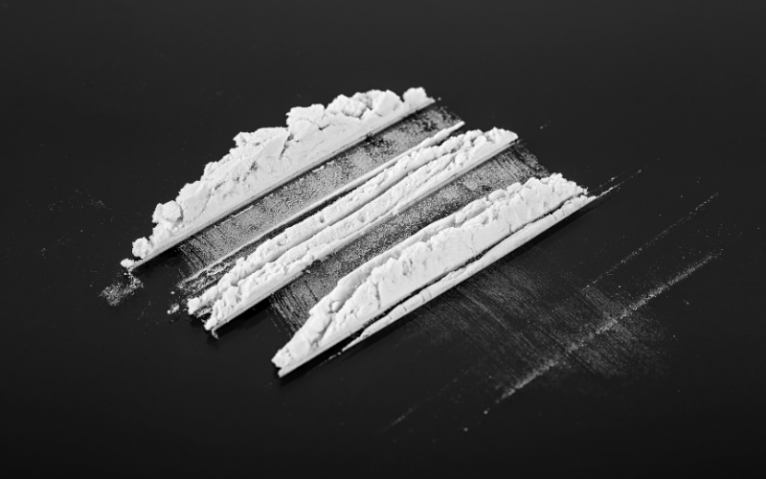Cocaine addiction saw a rise during the 20th century and continues to be an issue today. Cocaine is highly addictive and stimulates the central nervous system. There’s no doubt that people abuse and that cocaine addiction leads to a myriad of health and social problems. Learning more about cocaine addiction facts and statistics helps understand the disease and help those struggling.
What is Cocaine?
Cocaine is a potent addictive stimulant made from the leaves of the coca plant, native to South America. Although cocaine can be used as local anesthesia for some surgeries, cocaine remains an illegal drug.
On the streets, cocaine is a white, crystal-looking powder. However, street dealers mix it with cornstarch, flour, and talcum powder. But, to make people even more addicted, they often mix it with other drugs, including amphetamine.
5 Interesting Cocaine Addiction Facts You Should Know
Cocaine is a highly addictive drug, but sometimes people don’t recognize the addiction. Cravings of cocaine are incredibly high, which makes it very difficult to quit and treat. However, when you look at some of the most exciting cocaine addiction facts, you should know to learn about this disease.
1. Cocaine, HIV, and Hepatitis Are Connected
Various studies show that cocaine speeds up HIV infection. Since cocaine impairs immune cell function while promoting the reproduction of HIV. Besides, research says that cocaine addicts are also more susceptible to contracting other viruses, such as hepatitis C.
2. Cocaine Effects Are Quick
One of the most significant problems with cocaine is that its effects are almost immediate, but they disappear quickly. The timeline of the impact depends on the method of use. When someone injects or smokes cocaine, they experience a quicker and stronger high, but they’re shorter-lasting than snorting. For example, the high from snorting can last between 15 and 30 minutes, while the one from smoking only lasts 5 to 10 minutes.
3. Most Addicts Struggle with Co-Occurring Disorders
Cocaine is an illegal street drug. Most addicts turn to environments that promote other substances. Many cocaine addicts also develop dependencies on other substances, including alcohol and marijuana. Practices like “speedball,” which mix heroin with cocaine, can be lethal combinations that many users experiment with trying to get a more intense high.
4. Cocaine Causes Long-Term Damages to the Brain
Cocaine abuse leads to increased risk for stroke and seizures, as well as other neurological problems. Some reports link cocaine with intracerebral hemorrhages and balloon-like bulges in the walls of cerebral blood vessels. However, long-term damages from cocaine depend on the method used.
5. Addiction to Cocaine Happens Quickly
Most people start using cocaine after experimenting with other substances, most likely prescription medications. However, because the effects of cocaine are so rapid and fade away so quickly, addiction can happen almost instantly. Cocaine users often start snorting the drug, then mix alcohol and other substances to extend their high. However, since cocaine wears off in minutes, they soon come back to using more.
Cocaine Addiction Statistics
The numbers around cocaine addiction statistics are shocking to anyone who reads them. It’s mind-blowing to see the impact of this illegal drug in our society. From high-school students to adults, cocaine addiction does not discriminate.
- The number of cocaine addicts from 2011 to 2012 rose by 300,000 individuals.
- In 2012, over 600,000 people tried cocaine for the first time.
- The average age at first cocaine use in 2012 was 20 years old.
- In 2014, there was an estimated 1.5 million current (past-month) cocaine users.
- In 2014, according to the NSDUH, about 913,000 Americans met the Diagnostic and Statistical Manual of Mental Disorders criteria for dependence or abuse of cocaine.
- Cocaine was involved in 505,224 of the nearly 1.3 million visits to emergency departments for drug misuse or abuse in 2011.
- Between 30% and 60% of people who use cocaine combine it with alcohol.
Cocaine Addiction Treatment
Addiction to cocaine is highly prevalent, but those ready to break the addiction cycle can find hope in treatment. Side effects of cocaine addiction are hazardous to those using them and those around them.
When people experience withdrawal symptoms, they go back to taking it even more to control their symptoms. It’s paramount to speak with an addiction treatment specialist to determine the best way to start seeking help for bath salt addiction. At Lighthouse Recovery Institute, our alcohol addiction recovery programs include:
Medical Detox: A clinically supervised detox process held in addiction treatment centers ensures the patient’s safety and makes the withdrawal phase as comfortable as possible.
Intensive Outpatient Programs: After detox and maybe a partial hospitalization program, patients can choose an intensive outpatient program (IOP) that gives them the flexibility to attend school, work, or care for family members while still attending addiction treatment.
Long-term Recovery Programs: It’s easy to relapse after treatment; almost sixty percent of people relapse. Long-term recovery assistance, patients can have the ongoing support they need to maintain long-lasting sobriety, especially when people with alcohol addiction tend to struggle with related problems all their lives.
Group Therapy: As part of a drug addiction treatment program, patients often find group therapy helpful. So our team integrates Narcotics Anonymous (AA) meetings and other group therapy settings to assist in the recovery phase.
Get Help Today
If you or someone you love is struggling with addiction, seek help immediately. Call Lighthouse Recovery Institute today and speak with our addiction center specialists to learn more about our comprehensive and personalized addiction treatment programs.
Our philosophy revolves around treating each patient on a case-by-case scenario because we know no two addiction stories are alike. Start walking towards your recovery, and we’ll be here supporting you and your family every step of the way. Please don’t wait another day to start addiction treatment–your life depends on it.









